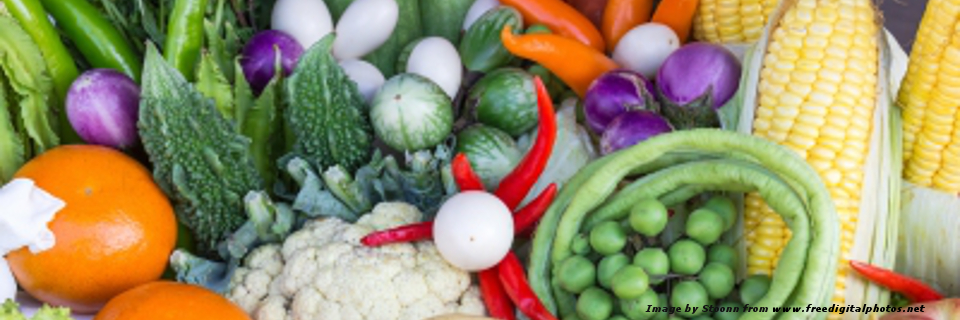Foods of non-animal origin: what are the risks?

20/03/2015
Foods of non-animal origin – such as fruit, vegetables, cereals, and spices – are an important part of our daily diet. Usually these types of food are associated with healthy eating and do not pose any health concerns. However, sometimes their consumption causes mild to severe illnesses.
Over the past 4 years, EFSA has looked closely at the risks posed by foods of non-animal origin. EFSA's Panel on Biological Hazard, with the support of the working group on foods of non-animal origin, assessed the public health risks posed by pathogens (disease-causing bacteria, viruses and parasites) that may contaminate these foods. The Chair of the Working Group, Jim McLauchlin, guides us through the main findings of this significant piece of work.
What are the risks posed by these foods?
A wide range of hazards are associated with different foods. In our work, we have identified and ranked combinations of foods and pathogens.
The top-ranking combinations of foods and pathogens are Salmonella and leafy greens eaten raw, followed by Salmonella and bulb and stem vegetables; Salmonella and tomatoes; Salmonella and melons; and pathogenic E. coli and fresh pods, legumes or grains.
Other pathogens that can be transmitted are norovirus, Shigella, Bacillus, and Yersinia as well as the hepatitis A virus.
Which foods pose the highest risks?
Amongst raw and minimally processed foods of non-animal origin, those that pose the highest risks in the EU are leafy greens, bulb and stem vegetables, tomatoes, melons, fresh pods, legumes or grains, sprouted seeds and berries.
These foods can be consumed in a variety of ways – from raw to highly processed and are generally free from noxious substances, such as poisonous chemicals, toxins and pathogenic organisms. Occasionally though, their consumption causes serious illnesses, which can be fatal. For example the 2011 sprouted seed-associated outbreak of Shiga-toxin producing Escherichia coli in Germany caused 53 deaths and more than 2,300 hospitalisations.
Are the effects less or more severe than those caused by foods of animal origin?
The proportion of human cases reported in outbreaks of food-borne diseases related to food of non-animal origin were compared to those associated with food of animal origin in Europe, from 2007 to 2011. Outbreaks associated with foods of non-animal origin are usually less severe in terms of hospitalisations and deaths than those associated with foods of animal origin. Results of the EFSA assessment showed that foods of non-animal origin were associated with 10% of outbreaks, 26% of human cases, 35% of hospitalisations and 46% of deaths. However, if data from the large 2011 Escherichia coli outbreak is excluded, foods of non-animal origin were associated with 5% of all deaths from reported foodborne outbreaks.
Have these risks been increasing in recent years?
Over the time period considered, the number of reported outbreaks associated with foods of non-animal origin, cases, hospitalisations and deaths increased, but foods of animal origin continued to be the source of the majority of all documented and reported outbreaks (90%).
What can producers do to reduce risks?
For producers and manufacturers, the primary objective should be implementation of food safety systems including Good Agricultural Practices, Good Hygiene Practices, Good Manufacturing Practices and Hazard Analysis & Critical Control Points. These systems should be implemented from farm to fork and are applicable to the control of a range of microbiological hazards. Also, each farm has unique characteristics, for example proximity to water sources, use of pesticides, etc., and therefore hazards should be evaluated on a case-by-case.
And what can consumers do?
Consumers should always handle, prepare, and store food of non-animal origin safely. This includes, for example, keeping hands and kitchen areas clean; separating raw and cooked food; and keeping food at safe temperatures.
What were the main challenges you faced in this work?
Food types considered in this work are very diverse and require different production, storage, processing, retail, and preparation practices. This was challenging as you need a wide range of expertise and skills.
And how did you tackle that?
We had diverse and complementary skills and expertise in the working group and we all worked hard as a team. The support from the EFSA scientific secretariat was important too. We also had input from staff at the European Centre for Disease Prevention and Control, members of the BIOHAZ Panel, EFSA staff and representatives of the food industry. Being able to observe planting and harvesting practices at first hand by visiting a farm producing leafy greens in Murcia, Spain was extremely useful.
What could the impact of this work be?
EFSA's scientific advice will assist the European Commission in considering risk management options for the control of microbiological hazards in this broad group of foods. This work may be useful also to other European institutions, national risk assessors and risk managers, universities and the food industry.
For more information visit:
